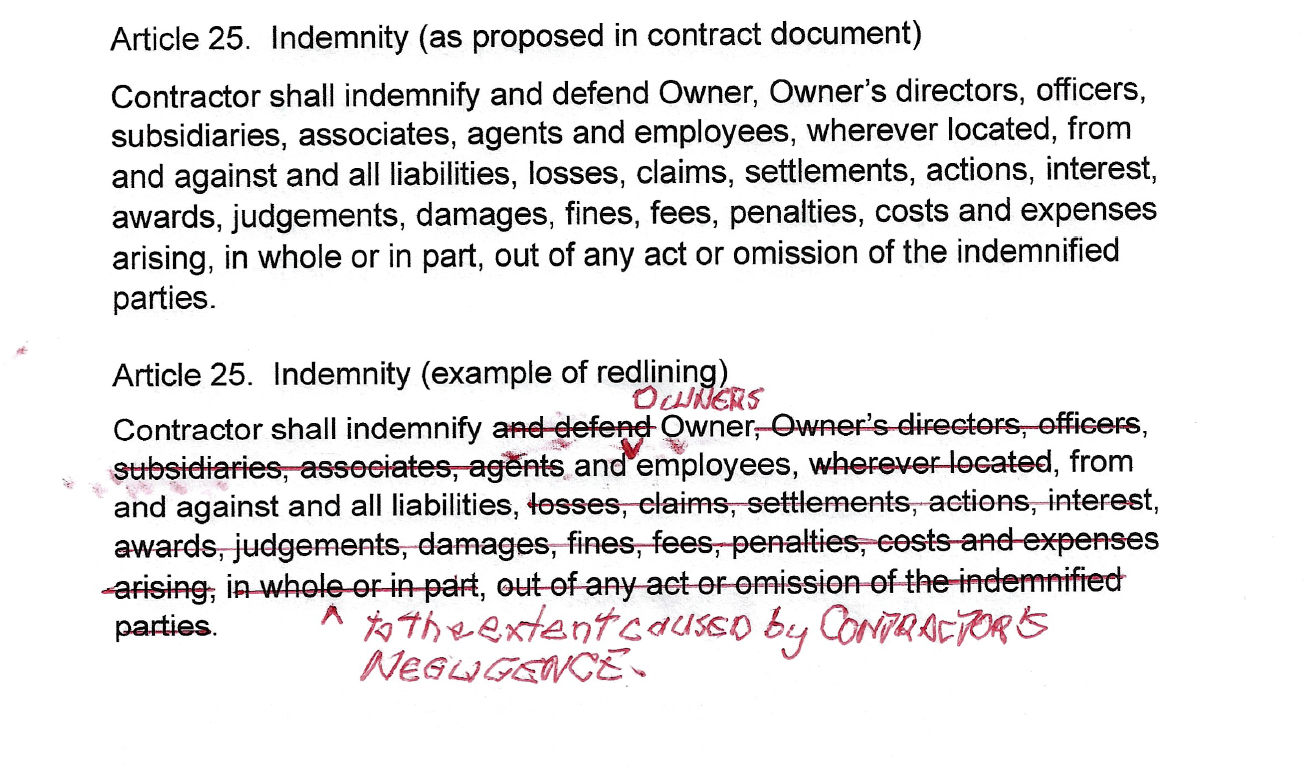Never Redline the Commercial Terms in a Construction Contract
There’s a habit that’s hard to break in construction contracting, and it needs to go. It's redlining.
Some contractors, or their attorneys, take a red pen or pencil and start striking through sections of the commercial terms in a proposed contract. You’ve probably seen it. Maybe you’ve done it. Red marks all over the page, trying to cross out risk buried in an Owner’s, EPC’s, or GC’s so-called “standard contract.”
Let’s call it what it is: redlining is lazy, unprofessional, and ineffective.
What Is Redlining?
Redlining, sometimes jokingly called “bleeding a contract to death,” happens when a contractor tries to change unfavorable terms by crossing them out or marking them up directly on the document. It might feel like you’re making your stance clear, but all you’re really doing is giving the other party a reason to toss your changes aside or ignore them completely.
Here’s an example:
The Right Way to Negotiate Contract Terms
There’s a better way, and it’s the professional way. If you want your requested changes to stick, present them in a formal letter to the procurement agent or contract issuer.
When written and accepted, that letter becomes an enforceable amendment to the contract. It doesn’t just show what you don’t agree with, it clearly states what you are agreeing to. That’s how serious business gets done.
Here’s what that looks like:
Why This Matters
Some Owners, EPCs, and GCs won’t love this article. That’s because redlines let them pretend your concerns were “too aggressive” or “unclear.” But a letter is clear, professional, and puts the ball in their court.
If they reject your proposed terms, it’s on them. But if they accept them, and many do when it’s presented the right way, you’ve just protected yourself in writing without making enemies or looking disorganized.
Final Thoughts
Redlining might feel like taking a stand, but in reality, it’s just bad form. If you’re serious about protecting your business from risky commercial terms and conditions, do it the smart way:
Read the fine print
Write your revisions in letter form
Get it signed and attached as an official amendment
This isn’t about playing lawyer. It’s about being a professional contractor who knows how to negotiate without bleeding the contract dry.


